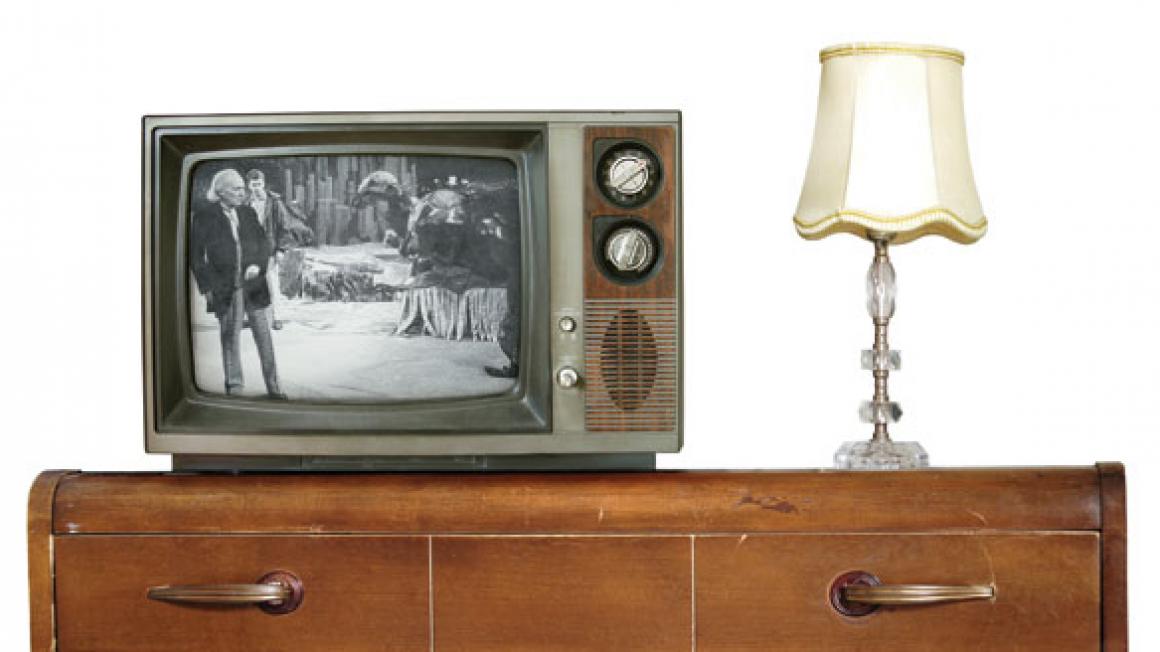Why life looks better in black & white
The national map reveals some intriguing details: 2,334 of those are in London (no doubt owned by cosmopolitan urbanites who value retro cool), 36 in Cambridge – conjuring up ancient, eccentric dons, their vintage valve sets covered in cobwebs – while in Kirkcaldy, nine thrifty crofters disdain the needless modern excesses.
A black-and-white licence does only cost £49 – against the £145.50 the other 25 million of us pay to watch our TVs – but surely the saving can’t be worth it, considering all the technicoloured entertainment the stubborn few are missing out on? Well, yes, Downton Abbey might lose something of its lustre, the girls and boys on The Only Way Is Essex and Made In Chelsea are bereft of their tans and snooker isn’t worth the candle (pace the commentary of the late Ted Lowe, ‘For those of you watching in black and white, the pink is next to the red.’)
But viewed on those 11,550 sets, the saga of the Crawley family has been transformed into classic drama, while the cruddy low exploits of the characters on those scripted reality shows have suddenly taken on a new, highbrow air of vérité documentary.
Freed from the distraction of colour, you watch the news without thinking about the outfit Fiona Bruce has chosen to inflict upon us. Meanwhile, Corrie addicts tune into TV’s longest-running soap opera and see the Rovers Return more or less as the first viewers saw the pub back in 1960.

And the biggest telly event of recent months harked back to that far-off era, the 50th anniversary of Doctor Who. The attendant hullabaloo has drawn Whovians to trawl through the early series and discover how little you miss colour in the adventures of William Hartnell, and Jon Pertwee in his first series – when the Daleks were even scarier among all the shadows.
Would that younger generations could open up the pharaoh’s tomb of the past and discover the other treasures hidden away for so long. All those landmark moments that shaped Britain as we gathered round to gaze at the cathode ray: John Freeman’s piercing, smoke-swathed interviews on Face To Face; the charged comedy of a changing nation in Steptoe And Son and That Was The Week That Was; Z-Cars: the cop drama with a conscience; a youthful David Attenborough’s first forays into the jungle; and the titanic documentary series The Great War (it’ll be a travesty if it’s not repeated among the many upcoming centenary programmes this year).
Jetting in from across the Atlantic in the 1950s and 1960s was a welcome invasion of all the pizzazz and innovation that Hollywood does best, in shows whose titles alone are enough to evoke a sigh of nostalgia from veteran couch potatoes who were then budding young shoots: The Twilight Zone, I Love Lucy, Perry Mason, The Phil Silvers Show. Late on came the brilliance of The Forsyte Saga – and that was it for black-and-white drama on the BBC – and, finally, the last and greatest moment of the pre-colour era: the moon landing in July 1969, when the entire planet stopped to watch the fuzzy light and shade and made out a foot stepping into the dust.
By December, all three channels had completed the switchover and the curtain fell on the age when TV was only in black and white. Yet, it’s an era of broadcasting that also glows rosy and golden. Now, you can turn down the colour to get a glimpse of that past, but if only there were a channel on which the schedules were composed of the very best vintage shows from half a century ago. You’d need a powerful figure to persuade a broadcaster to make the investment. But who among the great and good has the clout and inclination?
Well, there are six steadfast households in Windsor still opting for the £49 licence according to that count. You can’t help but wonder if one of them might be a certain castle…


